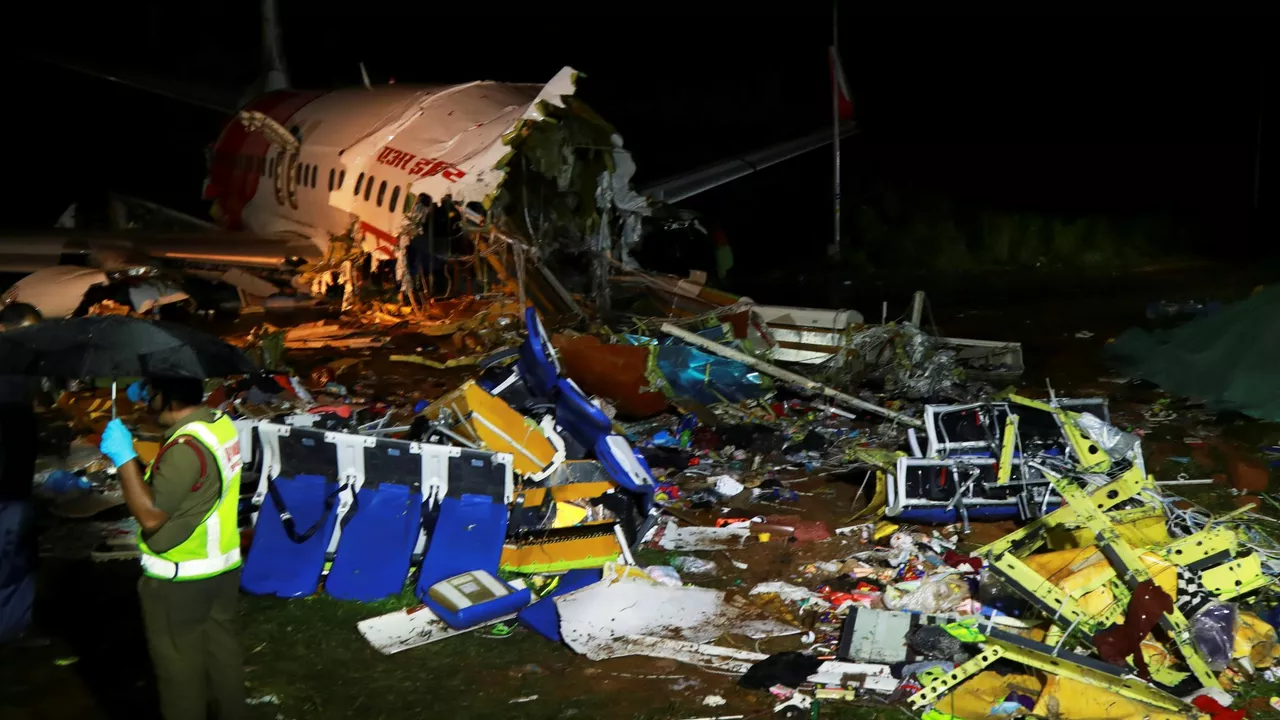The Context Surrounding the Crash
Let's begin with the story of Air India Express Flight 1344. It was a repatriation flight under the Vande Bharat Mission. Operating on August 7, 2020, this fateful flight was destined for Calicut International Airport in Kozhikode, Kerala, from Dubai in the United Arab Emirates. However, what was meant to be a regular journey ended in tragedy when the Boeing 737 overshot the runway during landing and crashed. A sad day indeed.
From Arjun's perspective, and for many others who have experienced flight in one way or another, a plane crash always shakes you to the core. I mean, we entrust our lives to these metal birds, soaring in the sky, don't we? Unfortunately, this incident led to the heartbreaking loss of 19 lives, including both pilots, and 166 people were injured.
But why did this happen? What led to this catastrophic event? I remember attending flights in my youth and the thought of a crash never crossed my mind, it was all about the excitement of being airborne or the thrill of traveling to a new destination. However, this incident has pushed the issue of aviation safety to the forefront.
The Technicalities Behind the Crash
In this section, I'll get a little technical, bear with me. A point to remember is that the Air India plane didn't just drop out of the sky. The situation was more complex and is connected to several contributing factors. The Directorate General of Civil Aviation’s (DGCA) preliminary report highlighted that amid heavy rainfall, the aircraft touched down approximately 3,000 feet beyond the threshold of runway 10. But wait, there's more to it.
You may ask, "Why can't they just hit the brakes harder, Arjun?" Well, I thought the same till I discovered a term called "Aquaplaning" or "Hydroplaning". It's an event when a layer of water builds between the wheels of the vehicle and the road surface, leading to the loss of traction which prevents the vehicle from responding to control inputs. If a car can skid in this situation, an airplane definitely has the potential too. The DGCA's report asserted that such a circumstance effectively delayed the aircraft's halt.
Fun fact, during torrential rains, pilots can see little to nothing in front of them, and they rely heavily on their instrument readings. The report also emphasized that the pilot in command continued the landing despite being unable to see the runway 8 seconds after the decision height. I agree, it sounds risky. It's like sending me to cook but with my eyes closed. A sure-shot recipe for disaster!
The Role of The Airport's Infrastructure
Okay folks, now let's discuss a bit about Kozhikode Airport itself. Kozhikode's tabletop runway came under scrutiny following the crash. "Tabletop runway?" you might ask. Well, it's an airport feature where the runway has levelled terrain on the top and steep drops along the sides. It is quite challenging for pilots due to the lack of any margin for overshooting. Picture it like a table, as the name suggests; it's flat on top with a sharp vertical drop at the ends.
There was another incident with a similar tabletop runway in Mangalore, in 2010, resulting in the tragic loss of 158 people. It may just unlock a key factor in such incidents where overshooting a runway can result in disastrous consequences. The DGCA report indicated that the aircraft plunged 35 feet into a downward slope after overshooting Kozhikode's runway.
Now imagine being at such an airport during a heavy downpour. Terrifying, isn't it? The report also highlighted the lack of the Arrester Bed System (EMAS) at Kozhikode airport. "EMAS?" You're probably scratching your head. Let's say it's a special material placed at the ends of runways to halt aircrafts that overshoot. Like a safety net, you could say. Unfortunately, this runway lacked this feature.
Could The Tragedy Have Been Avoided?
Ah, the million-dollar question, could this disheartening incident have been avoided? The DGCA report indicated that control inputs by the pilots and the prolongation of their flight in adverse weather conditions were crucial elements that led to the mishap. They also asserted that the aircraft itself had no instrumental or mechanical failure prior to the accident.
While we know that in case of adverse weather, pilots have the discretion to divert the flight to a safer nearby airport, the question that pops up is why it wasn’t done in this case. Possibly, the pilots were confident in their abilities to maneuver in such tough conditions. After all, they're trained for this, and yet things unfortunately went south. This pretty much reflects the unpredictability of life, doesn’t it?
To wrap up this disheartening but necessary exploration of the 2020 Kerala plane crash, it only behooves us to pay attention to the many crucial factors that play a role in aviation safety. The incident has stirred up a dialogue on the need for greater prudence in decision-making and risk management among pilots, especially in challenging weather conditions. It has also stressed the urgency for airport infrastructural upgrades. As for me, Arjun, I can't help but wonder about the complex and varied factors that intertwine in the world of aviation. It's a tragic event, but one that has the potential to usher in needed improvements in aviation safety. I hope this inside look has been enlightening for you. And next time, when we trust our lives to these steel apparatus darting through the skies, let’s spare a thought for all that goes on behind the scenes to keep us safe and secure.
